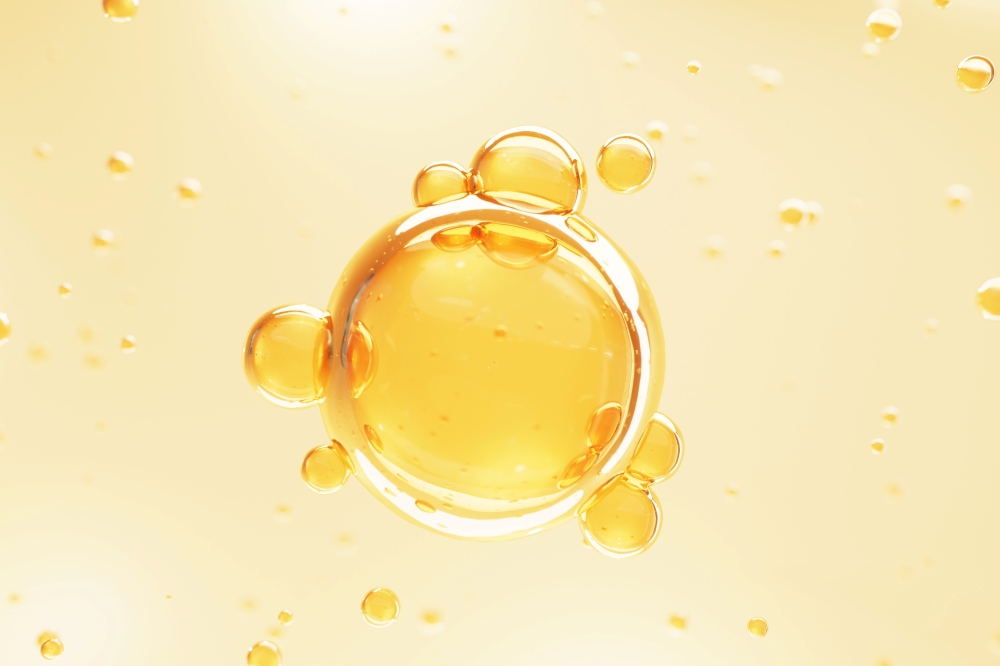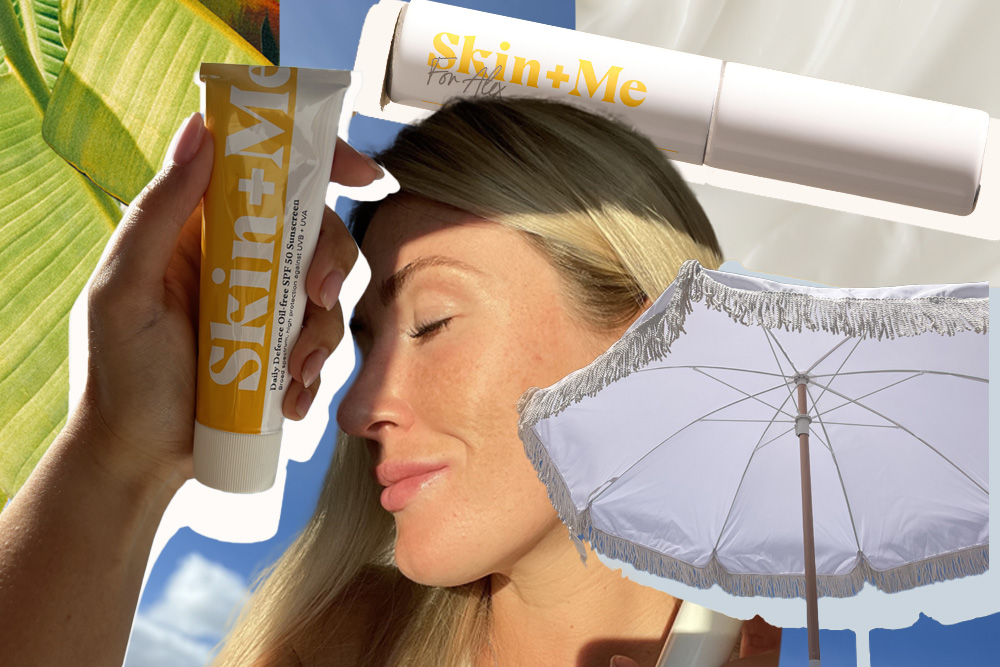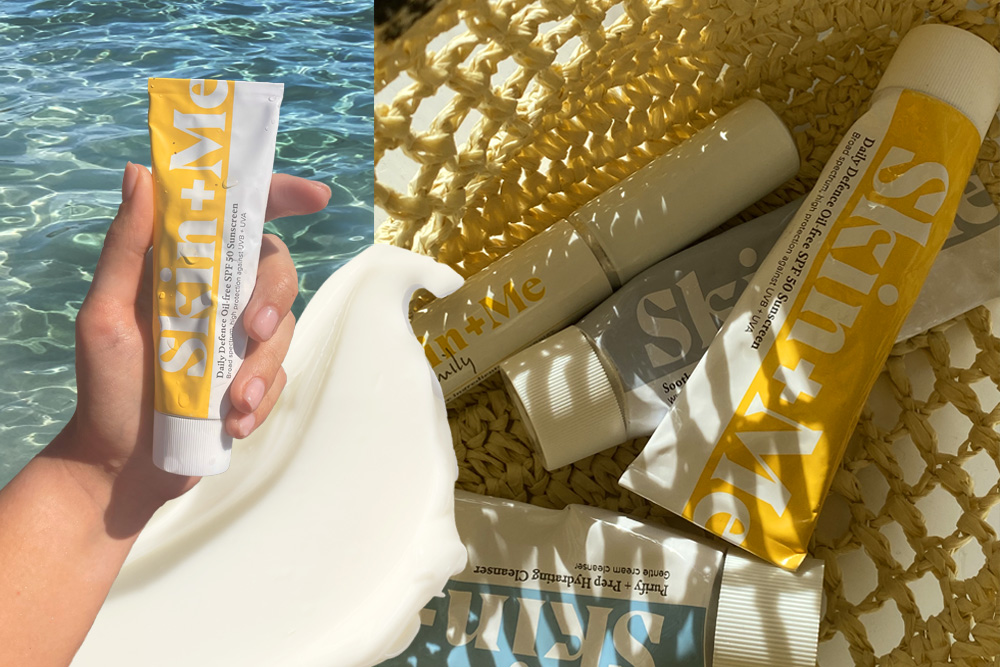Melasma 101

Link to share article here:
Ask A Clinician: What Is Cellular Skincare?
Authors: Stephanie Adu and Despoina Stylidou, Pharmacist Clinicians at Skin + Me
“Cellular skincare” has been generating a buzz in beauty circles over the past few months. These products are said to harness the powers of science to improve your skin on a deeper level, changing its structure and even protecting against future issues.
But is this really a groundbreaking development that will change the skincare game forever, or just another trend? Today we’re going to discuss the real science behind cellular skincare, and reveal how you can go deeper with your routine.
What does cellular skincare mean?
The shelves are full of products that claim to change the appearance of your skin, making it look younger, smoother, or more radiant. However, most high street products stay in the upper layers of the skin, known as the epidermis, and this limits their effectiveness. For example, anti-aging formulations may not actually be able to reach the lower levels of the skin where collagen and elastin – the proteins that keep your skin looking youthful – are found.
By comparison, cellular skincare products can go a step further and work directly on the cells within the epidermis. Due to their exfoliative nature, they can help to regenerate new skin cells by increasing cell turnover. They might also boost collagen production, reduce inflammation, increase hydration, regulate skin oil production and more.
The effectiveness of cellular skincare products on the epidermis depends on a number of factors, including the formulation of the preparation, the concentration and type of active ingredients and the unique characteristics of the skin.
The benefits of cellular skincare
As the old saying goes, prevention is better than cure – and that’s where cellular skincare comes in. As we age, our skin is exposed to UVA rays and environmental stressors, which leads to the depletion of fats and lipids that make up the epidermis. Once this occurs you may notice changes in tone and texture, which are some of the first signs of ageing.
By encouraging the cells in this layer of the skin to regenerate, we can slow down early signs of ageing, hyperpigmentation and spots. Using products that support your skin on a cellular level can help address several concerns with fewer products too – so there’s no need for expensive, time-consuming, 10-step routines.
Cellular skincare ingredients
There is a range of different ingredients that are scientifically proven to work on a cellular level. Some of them can be bought over the counter, while others can only be prescribed by medical professionals.
Tretinoin
Tretinoin is the gold standard anti-aging ingredient and its primary goal is to accelerate skin cell turnover. It is a potent Vitamin A derivative and belongs to the retinoid family. You may have come across retinoids before in many high street products – however tretinoin is 20 times more potent than retinol. This is why it is a prescription-only medication in the UK.
The process of renewing cells helps the skin to retain moisture, diminish fine lines and wrinkles and stops the breakdown of collagen. Tretinoin’s ability to retain moisture gives the skin a plump and glowy appearance. It is also used to treat acne, post-inflammatory hyperpigmentation and melasma.
It all sounds too good to be true, so what’s the catch? As great as it is, tretinoin cannot be used by everyone. If you’re pregnant, trying to conceive or breastfeeding, you should avoid this ingredient.
Tretinoin’s ability to accelerate the skin cell turnover may also lead to irritation or purging. Purging is a temporary reaction to an increased skin cell turnover rate. When skin cells are renewed, excess oils and sebum are pushed to the surface of the skin, and this may present as a breakout or irritation.
Some people are hesitant to use such powerful actives because of “the purge”, but fear not. Purging is a sign that your treatment is working hard and usually occurs in the first few weeks of treatment or when the strength of tretinoin is increased.
Some people notice visible results within a few weeks of tretinoin treatment, however for others it may take significantly longer. Studies show that the greatest anti-ageing improvements were noticed after six months of continuous use. This is due to the slow process of skin cells renewing – but don’t worry – patience always pays off. However, for acne sufferers, you might notice results as early as 12 weeks, with studies showing an 85% decrease in comedones with consistent tretinoin use.
Azelaic Acid
Azelaic acid is a holy grail cellular skincare ingredient. It encourages cell turnover, keeping the pores clear of bacteria and sebum which are the main causes of acne. Azelaic acid has anti-inflammatory properties and helps to reduce redness and breakouts that are associated with both acne and rosacea. And, it is also an antioxidant which helps to block environmental stressors from attacking the skin.
Azelaic acid is a popular treatment for rosacea as it is more gentle and less irritating than tretinoin. Azelaic acid also blocks the production of melanin, which makes it a huge contender when tackling hyperpigmentation. It can be used by most people, including those that are pregnant, and is available without a prescription.
Studies have shown a decrease in redness and breakouts associated with rosacea after 4-6 weeks of consistent azelaic acid use. But, for the best results, it’s advised that you use azelaic acid for a period of at least 12 weeks. Research shows that, when used for this amount of time, participants saw a 54% decrease in acne lesions.
Niacinamide
Niacinamide is the only active ingredient on this list that does not increase cell turnover, which means the likelihood of purging is low. So, if you’re not ready to take the plunge and dive into the land of azelaic acid or tretinoin then this one’s for you!
Instead, niacinamide works by repairing the damaged DNA of skin cells. It has antioxidant and anti-inflammatory effects, and increases the production of ceramides (the lipids that make up the fatty layer in the skin). It also improves the health of the skin’s moisture barrier which means great results for fine lines and wrinkles. Niacinamide is found in many products on the market as it can be used by most people without the risk of irritation.
Niacinamide is also a great treatment for cases of hyperpigmentation. Inflamed, dehydrated and dry skin causes melanocytes in the skin cells to produce excess melanin as a response. Niacinamide works by inhibiting the production of melanin in inflammatory skin conditions such as rosacea, melasma and post-inflammatory hyperpigmentation, which is caused by acne or trauma to the skin.
Niacinamide is safe for all skin types, including darker skin tones. It also reduces sebum production, which makes it a staple in acne treatments. Significant improvements in hyperpigmented spots, fine lines and wrinkles can be seen after 12 weeks of continuous use.
Ceramides
The skin’s protective barrier is made up of ceramides, which are the fatty lipids that hold our skin cells together. Found in most moisturisers on the market, they help maintain the skin barrier and are responsible for a healthy glow.
Suitable for all skin types, ceramides can rehydrate the skin and are an inexpensive way to help reduce signs of ageing. Ceramides are also great at reducing irritation and blocking environmental stressors, so they’re essential if you’re using strong active ingredients.
Results from moisturising regularly with ceramides can be noticed instantly. However the anti-ageing benefits are usually seen after 12 weeks of consistent use.
How to embrace cellular skincare
Cellular skincare products directly target the cells responsible for the health of your skin. Encouraging the skin cells to regenerate helps to slow down the early signs of ageing, promotes a healthy skin barrier and can also keep inflammatory skin conditions under control.
As dermatology prescribers at Skin + Me, we use a range of ingredients that work on a cellular level to treat both cosmetic skin concerns and medical conditions. We evaluate customers’ skin from the images they provide, then review their consultation form and medical history. This process means we are able to determine the most appropriate active ingredients to target their specific skin goals. We’re continually impressed by the remarkable results that our Skin + Me members achieve when they consistently use their personalised formulations.
The skincare industry will never stop evolving, and we can expect plenty more technological advancements in the future. But for now, the benefits of improving the health and appearance of our skin with products that work at a cellular level cannot be overstated.
References:
- Tanno O, Ota Y, Kitamura N, Katsube T, Inoue S. Nicotinamide increases biosynthesis of ceramides as well as other stratum corneum lipids to improve the epidermal permeability barrier. Br J Dermatol. 2000 Sep;143(3):524-31. doi: 10.1111/j.1365-2133.2000.03705.x. PMID: 10971324.
- Zhen AX, Piao MJ, Kang KA, Fernando PDSM, Kang HK, Koh YS, Yi JM, Hyun JW. Niacinamide Protects Skin Cells from Oxidative Stress Induced by Particulate Matter. Biomol Ther (Seoul). 2019 Nov 1;27(6):562-569. doi: 10.4062/biomolther.2019.061. PMID: 31272139; PMCID: PMC6824628.
- Liu H, Yu H, Xia J, Liu L, Liu GJ, Sang H, Peinemann F. Topical azelaic acid, salicylic acid, nicotinamide, sulphur, zinc and fruit acid (alpha-hydroxy acid) for acne. Cochrane Database Syst Rev. 2020 May 1;5(5):CD011368. doi: 10.1002/14651858.CD011368.pub2. PMID: 32356369; PMCID: PMC7193765.
- Tamara Searle, Faisal R. Ali & Firas Al-Niaimi (2022) The versatility of azelaic acid in dermatology, Journal of Dermatological Treatment, 33:2, 722-732, DOI: 10.1080/09546634.2020.1800579
- https://drugdelivery.chbe.gatech.edu/Papers/2012/Prausnitz%20Derm%20Book%20Chapter%202012.pdf
- Baumann, L. (2002). Skin ageing and its treatment. The Journal of Pathology, 197(1), 5–7. https://doi.org/10.1002/path.1103
- Mukherjee, S., Date, A., Patravale, V., Korting, H. C., Roeder, A., & Weindl, G. (2006). Retinoids in the treatment of skin aging: an overview of clinical efficacy and safety. Clinical Interventions in Aging, 1(4), 327–348.
- Rawlings, A. V., & Harding, C. R. (2004). Moisturization and skin barrier function. Dermatologic Therapy, 17, 43–48. https://doi.org/10.1111/j.1396-0296.2004.04s1004.x
New to Skin + Me? Get your first month of personalised skincare for £4.99 with promo code DOSE – complete our quick consultation here.
Looking for a routine refresh? Add the Dream Routine to your Skin + Me subscription.
In need of a restock? Head to The Skincare Shop for one-off purchases of your Routine Essentials.



